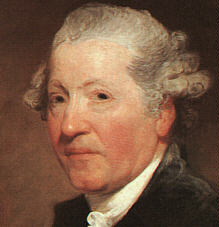
|
Special thanks to the Microsoft Corporation for permission to use following biographical information from Microsoft® Encarta '97:
Reynolds was born in Plympton, Devonshire, on July 16, 1723, the son of a cleric. He learned portraiture from a painter in London and in 1749 sailed to the Mediterranean with Commodore Augustus Keppel. After three years traveling in Italy he returned to London, where he soon attracted notice by his portraits of prominent persons. He came to be the first English painter to achieve social recognition for his artistic achievements.
In 1764 Reynolds founded the Literary Club, which included essayist and critic Samuel Johnson, actor David Garrick, statesman Edmund Burke, writer Oliver Goldsmith, writer James Boswell, and dramatist Richard Brinsley Sheridan. When the Royal Academy of Arts was instituted in 1768, Reynolds was elected president and was knighted. In 1769 he delivered the first of his annual Discourses (pub. 1778) to the students of the academy in which he set forth the idealistic, moralizing principles of academic art. In 1784 he succeeded Allan Ramsay as painter to the king; in the same year he exhibited his portrait of the English actor Sarah Siddons as the Tragic Muse (1784, Huntington Art Gallery, San Marino, California), probably his greatest portrait. Other well-known paintings are Nelly O'Brien (1760-62, Wallace Collection, London), Lady Sarah Bunbury (1765, Art Institute of Chicago), Heads of Angels (1787, Tate Gallery, London), and Age of Innocence (1788, Tate Gallery).
Reynolds is credited with more than 2000 portraits. Stylistically, he was influenced by Michelangelo and the Flemish painter Peter Paul Rubens. Reynolds's portraits were distinguished by calm dignity, classical allusions, rich color, and realistic portrayal of character. Unfortunately, his use of bitumen (or asphalt) and experimental pigments made some of his colors fade prematurely. Nevertheless, his portraits form an epitome of London society of his day. He died in London on February 23, 1792.
|

